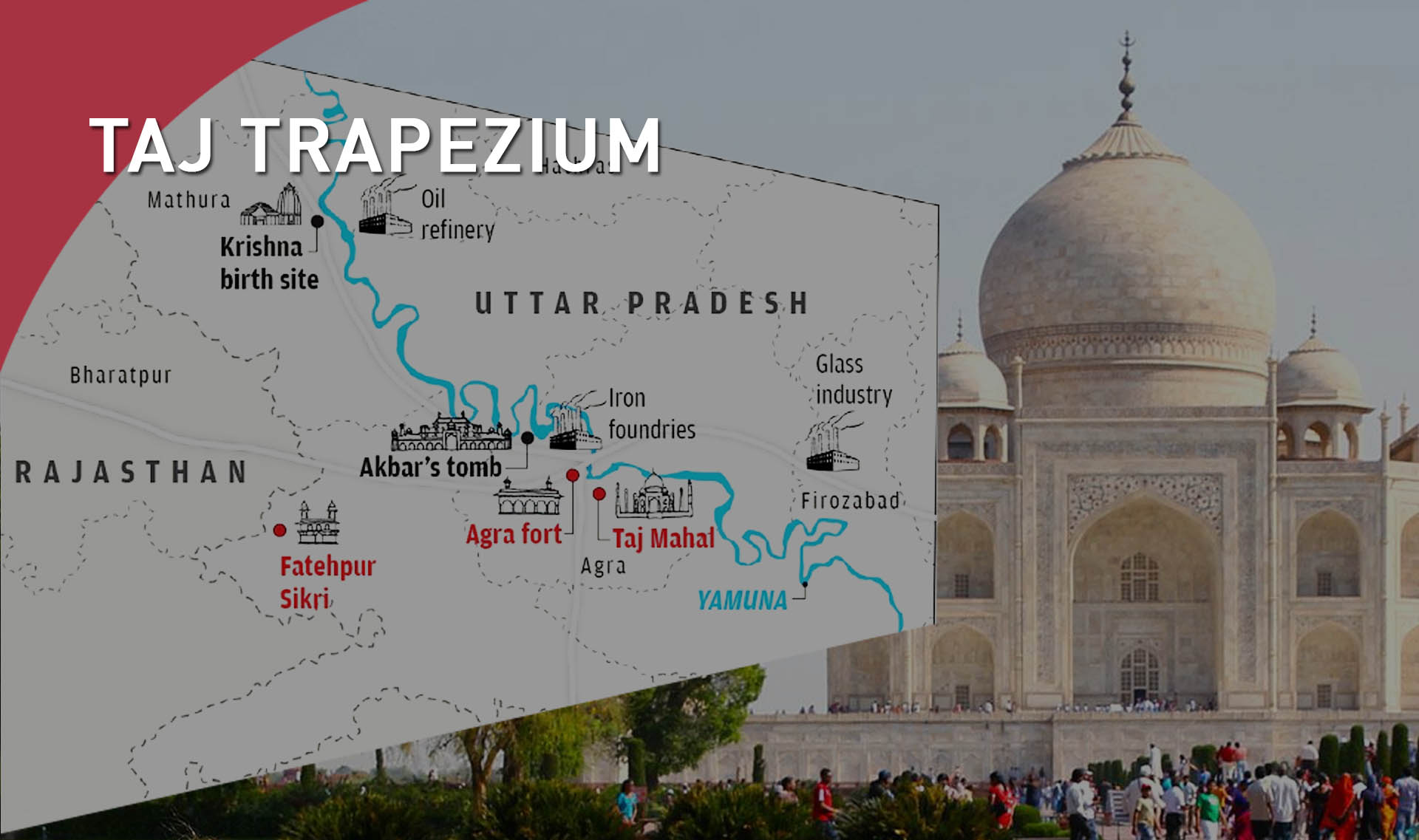Taj Trapezium Zone | 12 Dec 2019
Why in News
Recently, the Supreme Court has permitted Northern Railways to cut over 400 trees in the Taj Trapezium Zone (TTZ) for construction of an additional rail track between Delhi and Agra on the condition of mandatory compensatory afforestation.
Background
- Supreme Court Ruling: In response to a Public Interest Litigation seeking to protect the Taj Mahal from environmental pollution, the Supreme Court of India delivered a ruling in December,1996 that banned the use of coal/ coke in industries located in the TTZ.
- It ordered for switching over from coal/ coke to natural gas, and relocating them outside the TTZ or shutting down.
- The Central Government in exercise of the powers conferred under the Environment (Protection) Act, 1986 has constituted the Taj Trapezium Zone Pollution (Prevention and Control) authority in 1998.
- TTZ is a defined area of 10,400 sq km around the Taj Mahal to protect the monument from pollution.
- TTZ is so named since it is located around the Taj Mahal and is shaped like a trapezium.
- It comprises monuments including three World Heritage Sites the Taj Mahal, Agra Fort and Fatehpur Sikri.
Geographical location
- The geographical limits of the Taj Trapezium Zone is defined in the shape of a trapezium lying in the Agra Division of the State of Uttar Pradesh and in the Bharatpur Division of the State of Rajasthan.

